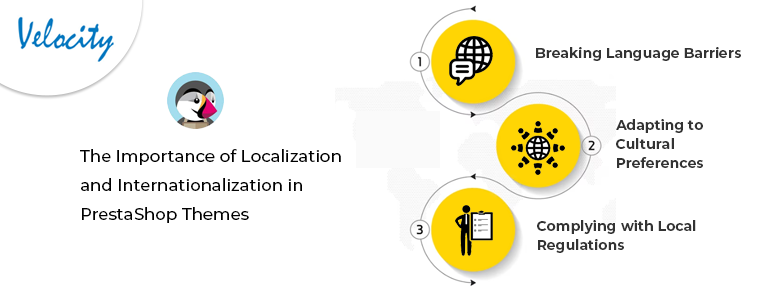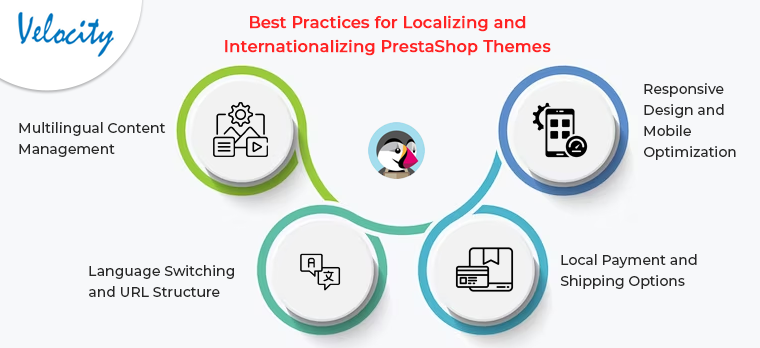In today’s interconnected world, businesses have the opportunity to expand their reach and tap into international markets like never before. However, to successfully target a global audience, it is crucial to adapt your PrestaShop themes for localization and internationalization. This blog will explore the significance of localization and internationalization in PrestaShop themes and provide valuable insights on how to effectively reach global audiences.
Introduction to Localization and Internationalization
Understanding the concepts of localization and internationalization is essential before delving into their implementation. Localization refers to the process of changing a product, such as a website or software, to match the unique linguistic, cultural, and regulatory needs of a particular target market. On the other hand, internationalization involves designing and developing a product in a way that makes it easy to localize for different regions and languages.
The Importance of Localization and Internationalization in PrestaShop Themes
1. Breaking Language Barriers
Language is a significant barrier when it comes to reaching global audiences. By localizing your PrestaShop themes, you can translate your website’s content, product descriptions, and user interface into multiple languages, making it accessible to users around the world. This enhances the user experience and builds trust among international customers.
2. Adapting to Cultural Preferences
Cultural nuances play a vital role in shaping consumer behavior. By localizing your PrestaShop themes, you can customize your website’s design, visuals, and content to align with the cultural preferences and expectations of different target markets. This helps you connect with your audience on a deeper level and boosts conversions.
3. Complying with Local Regulations
Different countries have specific legal requirements and regulations that businesses must adhere to. Localization ensures that your PrestaShop themes meet the legal obligations of each target market. This includes adapting your website to display relevant tax information, currency formats, shipping options, and other regional requirements.
Best Practices for Localizing and Internationalizing PrestaShop Themes
1. Multilingual Content Management
Implement a robust content management system that allows you to easily manage and update multilingual content on your PrestaShop website. This enables seamless translation and localization of product descriptions, landing pages, blog posts, and other textual content.
2. Language Switching and URL Structure
Incorporate a language switcher feature that allows users to switch between different language versions of your website. Ensure that your URL structure is optimized for multilingual SEO by including language codes or country-specific subdomains.
3. Local Payment and Shipping Options
Integrate local payment gateways and shipping methods that are popular and trusted in your target markets. This provides a seamless and familiar checkout experience for international customers, leading to increased conversions.
4. Responsive Design and Mobile Optimization
Ensure that your PrestaShop themes are responsive and mobile-friendly. Mobile optimization is crucial, as a significant portion of global internet users access the web through mobile devices. This ensures that your website looks and functions well across different devices and screen sizes.
Conclusion
To thrive in the global eCommerce landscape, businesses must embrace localization and internationalization in their PrestaShop themes. Breaking language barriers, adapting to cultural preferences, and complying with local regulations are key aspects of reaching a diverse international audience. By implementing the best practices mentioned above, you can successfully expand your business horizons and achieve global success. In case you need any help or have queries related to PrestaShop localization and internationalization, feel free to get in touch with [email protected].










